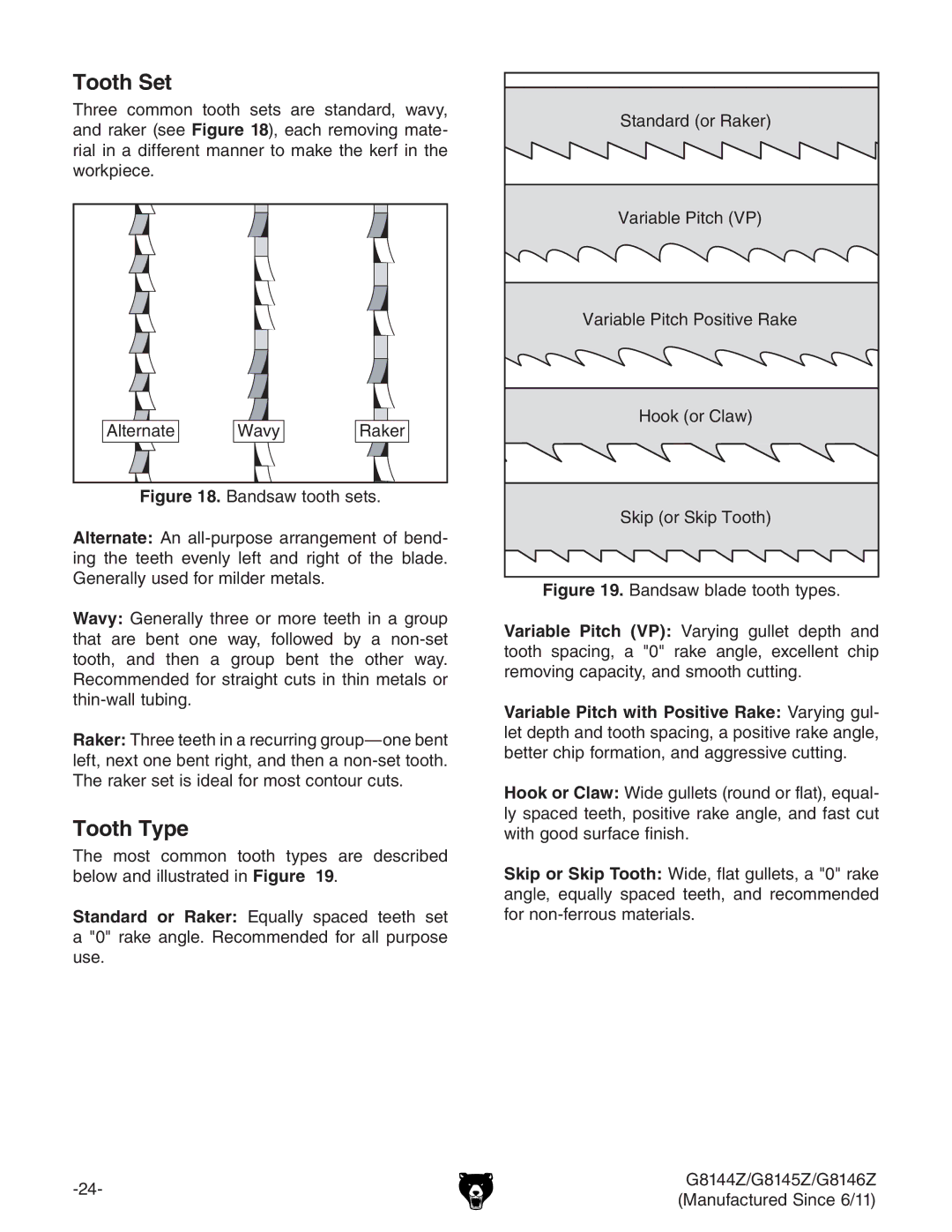
Tooth Set
Three common tooth sets are standard, wavy, and raker (see Figure 18), each removing mate- rial in a different manner to make the kerf in the workpiece.
Alternate | Wavy | Raker |
Figure 18. Bandsaw tooth sets.
Alternate: An all-purpose arrangement of bend- ing the teeth evenly left and right of the blade. Generally used for milder metals.
Wavy: Generally three or more teeth in a group that are bent one way, followed by a non-set tooth, and then a group bent the other way. Recommended for straight cuts in thin metals or thin-wall tubing.
Raker: Three teeth in a recurring group—one bent left, next one bent right, and then a non-set tooth. The raker set is ideal for most contour cuts.
Tooth Type
The most common tooth types are described below and illustrated in Figure 19.
Standard or Raker: Equally spaced teeth set a "0" rake angle. Recommended for all purpose use.
Standard (or Raker) |
Variable Pitch (VP) |
Variable Pitch Positive Rake |
Hook (or Claw) |
Skip (or Skip Tooth) |
